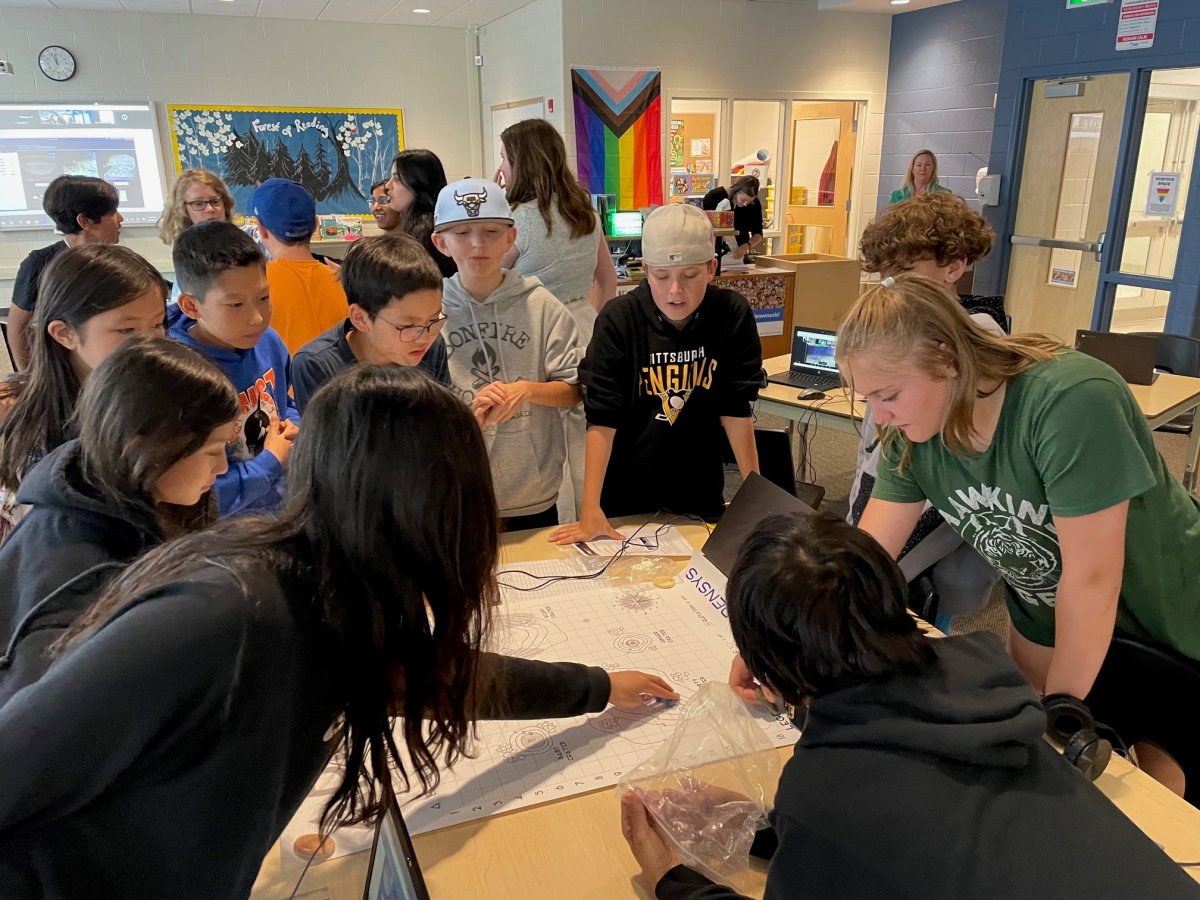Grade 6 students at a west-end London, Ont. school had an out-of-this-world experience Thursday when they got the opportunity to control a lunar rover model.

Students in Madame Mandy Lave’s class at West Oaks French Immersion Public School were tasked to work as a team to find evidence of water on a moon-like surface using a model of a lunar rover designed to go to the moon as early as 2026.
Lave says the opportunity for her students was incredible given all the buzz about space exploration, especially after Londoner Jeremy Hansen was selected for the latest NASA mission.
“They are learning how to work as a team on things… and they had to work as a team in order to complete the mission and be successful,” said Lave.
To be allowed to control a model lunar rover, the students first had to work in small groups to develop a submission detailing how they would attempt to find evidence of water on the moon. The submissions were sent to judges from Let’s Talk Science, the organizers of the competition.
One of those groups, comprised of Aydin Rahbari, Yisu Chen and Matthew Yu, was one of five selected as winners from over 100 national submissions.
So, with representatives from Let’s Talk Science, the Canadian Space Agency (CSA) and other space-based organizations on hand and virtually over Zoom, the students were tasked to work as a team to find evidence of water.
The students were split into groups controlling different aspects of a real-life lunar mission, like navigating over rocky terrain and monitoring the rover’s health.
And despite a close call on the rover’s battery life, the students found evidence in their first attempt, something that impressed all the space officials.
“We are really impressed with this group,” said Alexandrea Kasper. “They found their first crater actually faster than some of our grade nine winners have. I think it really shows their collaboration skills.”
One of the students who was part of the winning submission, Rahbari says he wants to eventually work for a national space program as a robotics engineer. The Grade 6 student adds the opportunity he and his classmates had was the perfect way to prepare for his future job.
“I’ve never really been able to experience something like this correlated to space, so it was definitely a cool feeling,” said Rahbari.
The reaction from the class after they found the evidence of water on their fake moon could have been mistaken for an actual mission control room with all the jumping and cheering, and lots of high-fives going around.
“How often do kids jump and scream and have fun when doing educational activities,” said Lave, adding she was proud of how her students collaborated.
Lave says a survey completed by her class after the initial round of submissions shows 75 per cent of her students have a higher interest in STEM-oriented careers now.
Parshati Patel, program designer and education adviser in the youth STEM initiatives team at CSA, says one of the reasons the national space program supports programs like the lunar rover challenge is to help get more students interested in the sciences.
“It’s really about getting that exciting engagement with them to understand our place in space and what Canada has to offer,” said Patel.










Comments